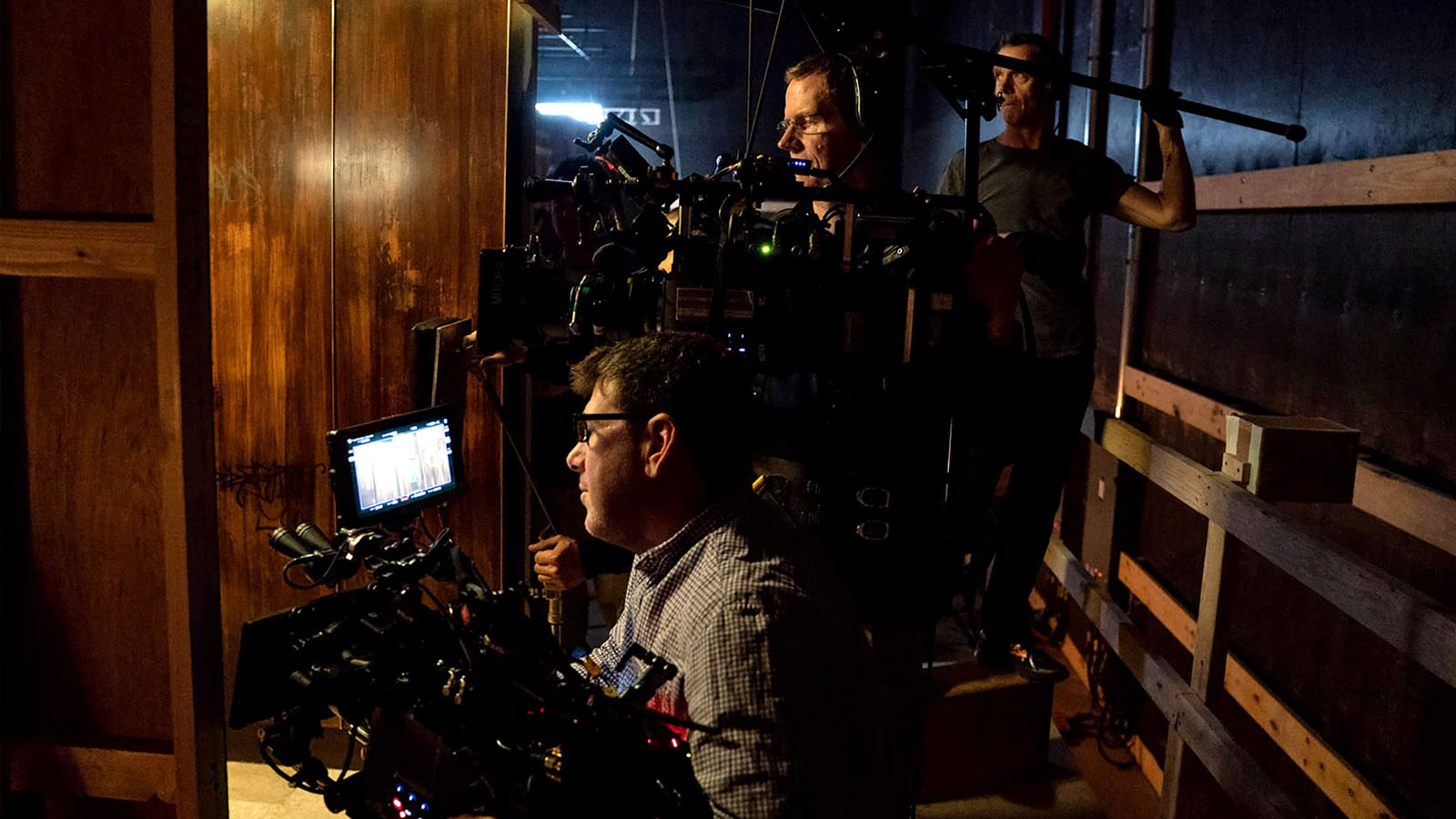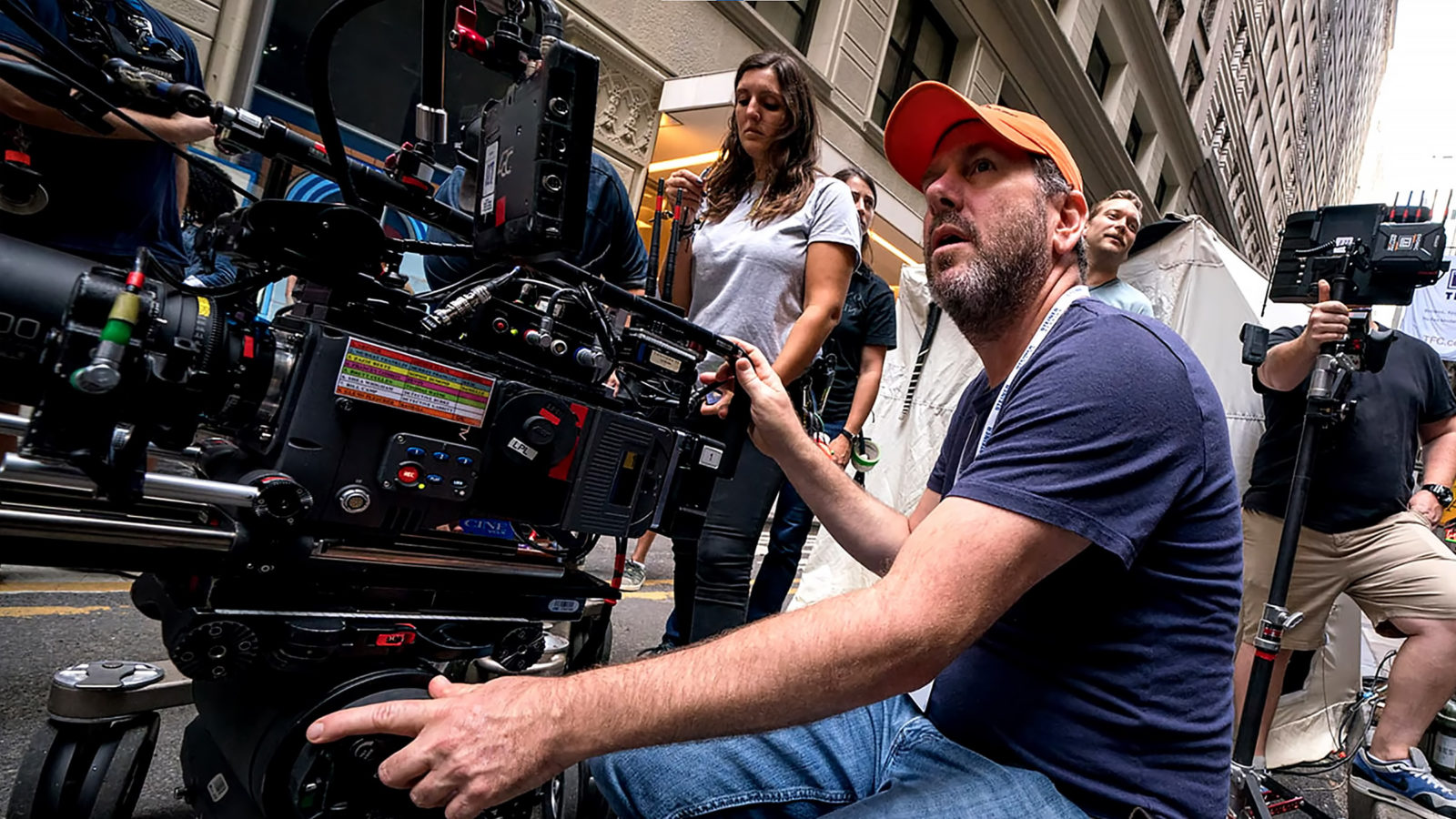Filmmakers—and cinematographers in particular—are constantly adapting to quickly evolving toolsets.
What drives that evolution? How do we ensure that the bleeding edge doesn’t overwhelm the human aspects of artistic creation in the group endeavor of production? Does the relentless drive for brand-new tools and the incredible visual power they bring threaten to limit creativity at times?
Lawrence Sher, ASC has been balancing those concerns on a daily basis for many years. As the person responsible for what comes down the barrel of the lens and strikes the frame. Other discerning cinematographers first noticed his work on comedies like I Love You, Man and The Hangover—both shot on film in an era when most comedies had already switched to digital.
Having navigated the switch from photochemical emulsion, Sher earned a 2020 Oscar nomination for his emotionally charged cinematography on Joker, which he accomplished with the large-format ARRI ALEXA 65 camera.
But Sher has never been a Luddite. And in light of his long experience, his attitudes about the problems and potential of constantly evolving technology are instructive.
A happy medium
Up until the 1990s, almost all cinematographers preferred film, the standard for more than a century.
But breakthroughs in the efficiency and resolution of scanners and film recorders led to the digital intermediate, or DI.
Unlike some, Sher immediately saw the potential.
“I was a very early proponent of the DI. I understood and recognized how transformative that technology was going to be,” he says.
“Working on the Hazeltine was always comparatively rudimentary. When we started seeing the incredible results being achieved in still photography we wanted that incredible control. We said, ‘Let’s bring Photoshop to motion pictures!’”
Process-dependent
As is often the case with technology evolution, the power of new tools was limited to some extent by the habitual application of older ways of thinking.
It’s been a long path from the first DIs to color science that will maintain the cinematographer’s intentions from the first dailies all the way through to finish—and it’s still a work in progress.
“There was a transition period in which we were cutting negative and bringing that into DI,” Sher says.
From the start, I wanted more. I didn’t want rudimentary tools that only had primaries.
“And then we began to scan everything and stopped going back to the negative at all. For me, things like ACES and other technologies were rooted in the Hazeltine, partly as a way to give directors of photography the same experience they had before, in a simple form, to help ease the transition. But from the start, I wanted more.”
“I didn’t want rudimentary tools that only had primaries, an attempt to only replicate film chemistry. That limits your scope when you get into the final DI, when suddenly you have secondaries and windows.”
Pushing forward
So over the last decade, Sher has been asking his collaborators in the post field why things couldn’t be better.
In a field like cinematography, where there’s a relatively small customer base and a premium on efficiency, innovation is often driven by such personal entreaties. The trick is to find a curious-minded engineer or scientist who can execute a workable, affordable solution, and an open-minded company willing to experiment.
“If I’m in DaVinci Resolve—which is my preference—we’re effectively dealing with ones and zeros,” he says.
“Why can’t I start my dailies color on Resolve, and make every decision one-to-one all the way to the final? On I Love You, Man, which was shot on film, we were very happy with the dailies. Then we jumped back into the DI and it was like the dailies now had to transform into this different, final DI world.”
“We could match it,” he adds, “but it was frustrating to the director [John Hamburg] and myself to not have it be the same dailies as the starting place in the DI. After that, I was desperately trying to figure out how to get all the tools at our disposal from the beginning—to make dailies to DI one-to-one.”
A matter of concern
Earlier in the DI era, there were serious concerns that the ease with which the images could be completely changed threatened the director of photography’s control and power in the filmmaking hierarchy. But that’s a separate issue.
And then digital arrived.
“With digital, it only became more and more of an issue,” says Sher. “And I became obsessed. The next phase of discussion was P3 versus Rec. 709. Everything on set was 709, and all of editorial was 709.”
Why doesn’t it look like what we’ve been used to for the last six months in the editing room?
“Then we’d go into a theater or the DI screening room and make the images that everything is going to be based on. And it’s like, ‘Oh, this is now your movie. Why doesn’t it look like what we’ve been used to for the last six months in the editing room?’ And it was ridiculous to try to explain to your director, because the truth is it doesn’t and shouldn’t matter. They should be able to have the same image from editorial through release if it’s possible.”
“So my question has always been, ‘Why can’t we stay in one color space from beginning to end?’” says Sher. “To make everything look the same—on the set, in editorial, in the DI screening—that’s the goal.”
“And a director, for example, should never have to think about this stuff,” he continues.
View this post on Instagram
Driven to distraction
Is Hollywood’s inexorable drive to take technology to greater heights always healthy? Of course not, but there can be a very lucrative payoff when it works.
That’s why people keep pushing new techniques and tools.
But part of the cinematographer’s responsibility is to balance new tools with the purely human and creative aspects of filmmaking so that storytelling isn’t swamped by “technolust,” as it’s been termed. Some filmmakers seem to demand the future, blazing the path for others. It can be risky, but the rewards can be significant.
“Erik Messerschmidt shot Mank and Devotion in HDR, from set all the way to the end. That is fantastic—and I wanted to do that on Black Adam. But the truth is it involved so many tangential considerations. I couldn’t get everyone on board—and I had a big budget and Warner Bros.”
“Given the pressures, sometimes you have to take the path of least resistance, and stay with the technology that has existed for five years. It was hard enough to get P3! I ended up having an HDR monitor on set, and the DIT did as well. But the director did not have an HDR monitor on set—although he will in editorial. And all our dailies went in HDR. So it’s baby steps.”
“I remember when the DI was something you had to fight for. We had to convince them that it would save money. Now it’s mandatory. So progress is incremental.”
From one extreme…
Of course, the eye behind the camera matters far more than the technology.
For proof, take a look at Daughter, a short film that Sher shot completely on the iPhone 11 Pro as part of a series of films made for Apple. Shooting with an iPhone does affect every decision. And a smart filmmaker learns the technical parameters of the toolset and works within them, looking for opportunities and avoiding pitfalls.


“I’ve got this thing in my pocket every day,” says Sher. “What if that was the thing we had to make a movie on? And how does that change your mentality? I came from using literally one of the biggest sensors in the world on Joker to having one of the smallest.”
“Suddenly, I’m going from a really shallow depth of field to infinite. That raises questions—am I hanging on to the idea of depth of field because the audience feels it, or just because I’m used to it? What if that’s not in the toolbox anymore?”
“And conversely, how can using this tool free us up and add to the possibilities?” he continues. “Once you get through the first day of shooting, it just becomes storytelling, capturing the moment of emotion. It didn’t really feel that different from making any other movie. The color correction is still necessary to make things smooth and seamless.”
“That’s one reason I was very interested in the work that Frame.io is doing to get HDR imagery onto smaller screens. It’s one more step in the right direction.”
It’s still all filmmaking
Returning to the other end of the spectrum, Sher used an ARRI LF and a 2.39:1 aspect ratio to shoot Black Adam, directed by Jaume Collet-Serra, and expected in summer 2022.
“That was a wonderful challenge in a whole bunch of different ways,” Sher says.
“Obviously it has a major effects element, and we shot some work in The Volume, which was very cool. I’m very interested in that technology. The project was parallel to many of my experiences on Godzilla—partial sets with extensions, people flying in the air. Compared to Joker, which was basically a ‘70s character piece, this is more of a traditional superhero movie that thrills the audience by taking them thousands of feet in the air.”

“In a way, the craft is effectively still the same,” he says. “The canvas is slightly different. Scenes live and die on the simple intimacy of human connection.”
“But in the end, it’s all filmmaking.”
Featured image © ARRI




